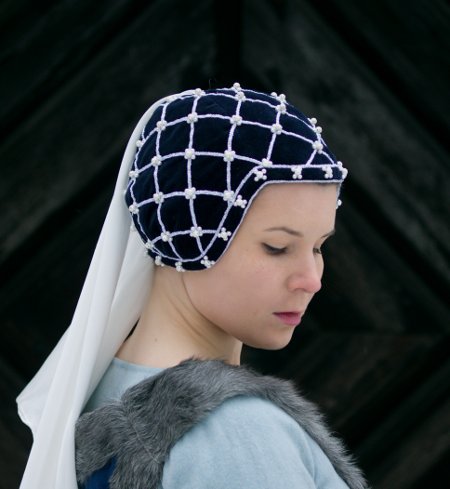
Velvet caul, 2011
A married lady can't go about with her hair too visible, but as the late middle ages are the fountain of fabulous headwear it's not boring at all. Moreover, you can for once stop worrying about whether you have time to do your hair (like on the 18th century), and instead spend ages beforehand making something with which to cover your hair quickly.
I googled and leafed through my "Medieval Tailor's Assintant" to find something nice that would more or less accurately go with my sideless surcote (and possibly with other stuff later). I chose a made up caul decorated with braid and pearls, for which Thursfield gives pattern and instructions for.
For the material Thursfield recommends silk, but I was working with a tight schedule and couldn't find a suitable silk in time. Instead I bought dark blue velvet. Obviously there is some disagreement about whether velvet was commonly used on the 14th century or not, but maybe it could be used for small items such as a headdress... Though of course that would not have been cotton velvet. But as it was available, affordable and pretty, all period-correctness-worries were once again sacrificed to these good reasons.
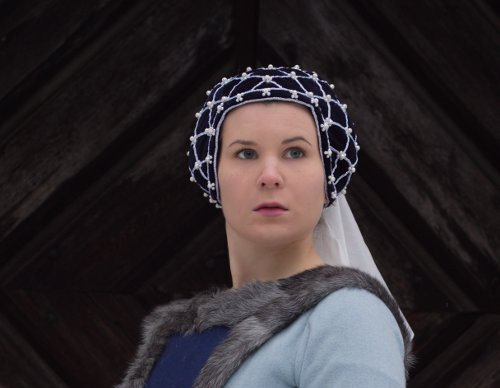
I copied the pattern on the book and began fitting it. Like my previous attempts with Thursfield's headwear this pattern turned out to be too large for me, so I had to scale it a lot, and in the process the pattern evolved quite a bit. I have, during the last years become quite well aquianted with my figure through pattern drafting, but my skull was a whole new territory.
After several mock up versions I was at last happy with the pattern. I added a seam on the center piece to improve the fit, especially on the forehead, and also shaped the front edge on the forehead to a more curved shape while in the original pattern it was straight. A straight front edge, might, by the way work provided you had picked your hairline very high according to period fashion, but as I'm extremely reluctant to lose any hair in my head I chose to shape the skull to fit my hairline instead.
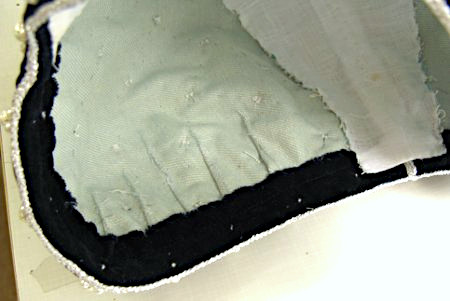
The caul is supposed to have extra room on the sides for plaits. Thursfield tells you to simply pleat the edge, but I shaped it with darts intead to maintain its shape better.
When I was happy with the pattern I made an interlining of cotton twill and the top layer of velvet.
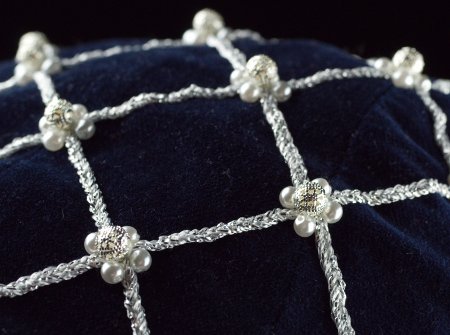
According to "The Medieval Tailors Assistant" and visions of story book queens I covered the caul with a lattice of silver braid. After trying a few options I decided on making a 4-strand braid of silvery crocheting thread. It shaped fabulously when sewn down thanks to its elasticity. I pinned the braid to form a lattice beginning on the forehead. It's not perfectly even or symmetrical but that shows surprisingly little in the end. I was in a hurry to get it in a wearable stage for the Baronial Investiture, so I had to pin the rest of the lattice and edge the caul (leaving the ends of the braid under the edging) before actually sewing the braid.
I edged the caul with a wide bias-cut strip of velvet. It turned out surprisingly neat considering the hurry I made it with. Some projects simply are lucky! I sewed the rest of the braid on the car on the way and finished them just in time to wear the caul the same night. For the next day's court I added a braid around the edge.
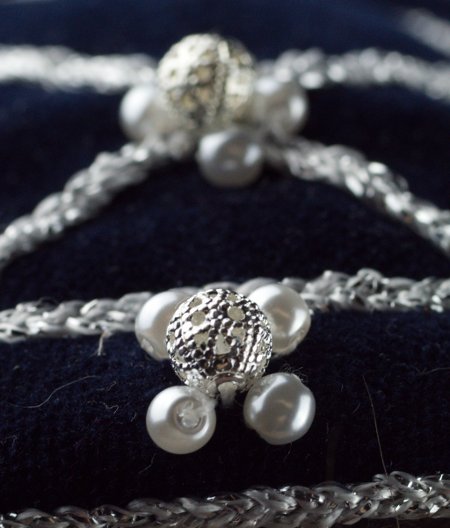
After the Baronial Investiture I could leisurely continue adding some more bling. I had from the beginning planned to use the beautiful filigrane pearls that my friend Riikka has in her shop for this project. With them I used white pearls. After having finally sewed all the pearls I added a linen lining on the inside to protect the sewing threads. I have worn the caul with a silk scarf pinned on the back as a veil.
The bling caul turned out very nice. The time I spent drafting the pattern paid off, as the caul sits on my head so securely I can almost forget wearing it.
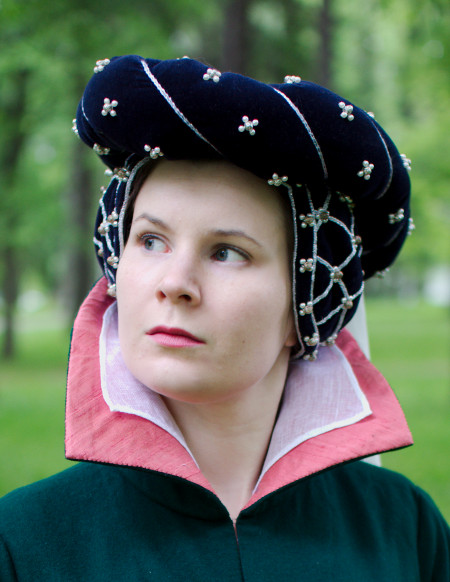
The Caul, vol 1.2, 2015
A couple of years later I made a sumptuous Houppelande gown. The big dress needed a big headdress, so I decided to upgrade my old caul with a padded roll. Happily I still had the same velvet, crochet thread and found more pearls.
The roll is quite heavy, but thanks to the well fitting caul the combination stays on even surprisingly securely. The roll is just pinned on so it can be easily removed, but I've come to like the combination so much that I usually wear both.
